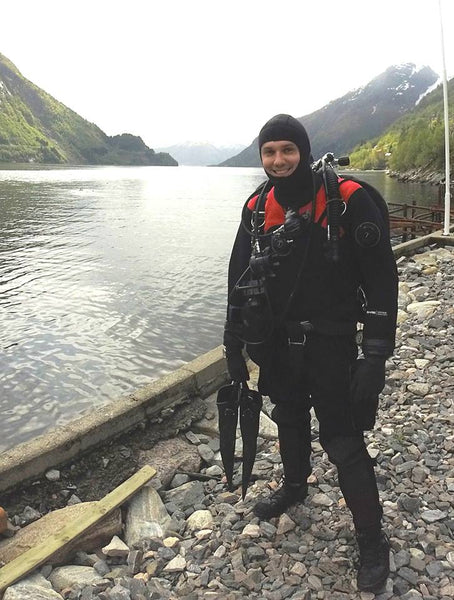
My van is the vehicular equivalent of ‘Trigger’s Broom’. In my mind I think of it as an excellent little runner but in reality large sections of it have been replaced at considerable expense. It’s still worth doing the work because, despite the fact it’s a bit battered and old, the result is that I have a working means of transporting large amounts of kit about and I don’t really care if the seats get wet.
Drysuits aren’t really like that. There’s something about a drysuit that once it starts to leak it just kind of never stops. A bit like a dutch child with it’s fingers in the dam, you go chasing around the various sources of each leak, fixing one, only for another to appear elsewhere. That’s why when people ask whether buying ex school suits or ebay specials is a good idea, I tend to suggest that they might as well add the £300 odd they pay for the second hand sieve to the price of the decent, brand new suit they will undoubtedly buy.
Drysuits must meet one specific requirement and the clue is in the name. A leaking suit is a misery to dive and, depending on how bad the leak is, they can be colder than a wetsuit all the way through to down-right dangerous if the water floods in. Buying an old leaking suit is a bit like saving money on a car by purchasing one without an engine. That’s why I usually recommend that if you’re looking to start diving in the UK then purchasing a decent suit is one of the best first purchases you can make. Following on from this, ill fitting, bulky suits are also a significant cause of issue for divers looking to perfect their buoyancy. Lots of professional divers and tec divers could improve their skills by upgrading to a properly fitting suit. At it’s worst a bad suit can restrict movement, cause cramps or alternatively, if too big- particularly in the legs, cause severe buoyancy issues when air flows through the suit and pops the boots off the feet.
My main recommendation when purchasing a suit is to either go for a membrane or thin compressed neoprene. I would tend to avoid the thicker neoprene suits as they are heavy, bulky and cause some buoyancy issues when the suit compresses at depth before springing back to life on the ascent. The other issue with big, thick drysuits is that they stink. It doesn’t take long to build up a heady fungal aroma in the damp recesses of the suit where the air never reaches to circulate. This treats your buddy to a blast of feculent ming whenever they’re lucky enough to unzip you.
Suits that allow some degree of tailoring are good too. There are lots of great off the peg sizes now but being able to choose the right fitting boots is a big plus. Socks and rock boots or the thinner ‘tec boot’ styles will allow you to do the more technical style of kick as well as restrict the sensation of ‘lots of air swilling around in a wellie effect’ you get with the thick rubber boot style.
A neoprene neck seal is warm and comfortable and if you can combine that with the sitech ring system on the wrists you have a set up that means it’s highly unlikely a ripped seal will result in a cancelled dive. Neoprene just tends to wear out and loosen over time as opposed to ripping and becoming useless. The sitech system allows you to swap out the wrist seals there and then if they rip as well as docking with a dry glove system. Front zips are great because they make you self sufficient but aren’t essential.
What about under-suits? Well the main issue with under-suits is the trade off between warmth, bulkiness and flexibility. The big sleeping bag style romper suits do tend to be very toasty warm but unless they’re particularly well made can sometimes be very bulky and buoyant. They’re only suitable with membrane suits. More technical style under-suits can be used with neoprene and membrane suits. Combined with a decent base layer they will keep you warm under membrane and neoprene suits.
Once again, the dive centre is your friend. They can measure you up and make sure you get properly fitted! The Fourth Element Argonaut Drysuit can be fitted using the revolutionary Biomap tool which ensures you get the best possible fit
So don’t suffer in a knackered old bin bag full of holes with Frankenstein boots 2 sizes too big. Treat yourself to a decent well made drysuit and you’ll suddenly find UK diving much, much more enjoyable!







